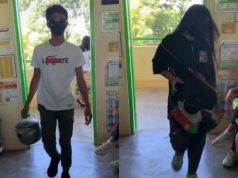
The unstable internet connection remains the main problem of teachers, students and parents in distance learning, according to a recent survey.
The poll conducted by an independent research firm called iOptions Ventures Corporation showed that more than half or 67% of parents, 84% of teachers and 71% of students chose “unstable mobile/internet connection” in the list of challenges encountered in distance learning.

Most parents (60%) and teachers (76%), meanwhile, face the same concern on “children encountered difficulty in self-studying.
All three groups of respondents also experience the following struggles:
- Distractions (social media, noise from community/neighbors) – parents at 51%, teachers at 47%, students at 52%
- Insufficient load/data allowance – parents at 50%, teachers at 53%, students at 53%
Most teachers at 74% see the lack of time of parents/guardians in helping their children with their studies as challenges in the new learning approach.
This was followed by the unavailability of parents, guardians, adults as learning facilitators wherein at least 61% of teachers chose this as a big concern.
In line with this, these groups were also divided in the modes of distance learning used.

The Department of Education Commons, the education agency’s own platform for learning materials, is mostly used by teachers (53%).
Parents (35%) and students (36%) use DepEd’s Facebook page the most.
These findings were part of a report titled “Philippine Distance Learning Survey” published on May 31. The online poll was conducted from April 20 to 28.
The number of respondents were:
- Parents (6,991)
- Teachers (4,933)
- Students (7,178)
Prior to this, the Alliance of Concerned Teachers also released a similar poll that showed 75% of public school teachers outside of the National Capital Region experience the negative impacts of their duties in distance learning to their physical health.
Some 76% of those within Metro Manila also experience the same.
This survey was conducted from March 29 to April 11. Its participants are 6,731 public school teachers from Kindergarten to Senior High School across the country.
Face-to-face classes with some conditions
The Commission on Higher Education previously proposed to end face-to-face classes as they adopted a new policy to allow flexible or distance learning to be the “norm” in the future.
Results in the recent survey, however, showed that most parents, teachers and students still prefer face-to-face classes, albeit limited.

Most of them chose the following as the top considerations should face-to-face classes be returned:
- Readiness of the local government and community to conduct limited face-to-face classes, such as providing shuttles for students and distributing hygiene kits (face masks, shields, alcohol, sanitizer)
- Readiness of the school to conduct limited face-to-face classes such as having functional restrooms, provision of handwashing facility, installation of acrylic panels on the tables to be used in the classrooms
- Strict implementation of minimum health protocols, such as wearing of face masks and shields
- Strict implementation of physical distancing
- Frequency of face-to-face classes per week









